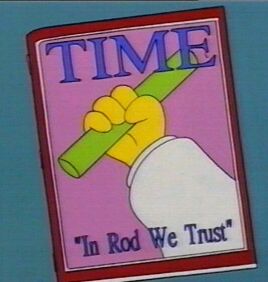Calling the government’s bluff (USEC)
Event driven trading is never as simple as people think. The concept is simple enough: identify an event that is likely to change the price of a stock, determine the price of a stock after the event does or does not occur, determine the probability of the event occurring, and take a position accordingly. Of course, the ending price and the odds are difficult to predict, but the real problem with event driven trading is that if the event fails to occur the price of the stock will typically drop precipitously, since everyone else is watching for the same event. The typical event is a merger, but a spinoff, divestiture, or even a bankruptcy filing can create an event.
 USEC Inc. has an interesting one; a loan guarantee from the Department of Energy that they applied for in order to construct a new facility. USEC is currently the only uranium refinery operating in the United States. It turns mined uranium into low enriched uranium for use in nuclear power plants, and presently employs archaic and inefficient gaseous diffusion technology. Ironically, one of the biggest inputs to producing fuel for electric plants is electricity; 65% of USU’s operating costs come from electricity, and centrifuge technology requires an impossible-seeming 95% less power. For this reason, most nuclear fuel enrichers have switched over to centrifuge technology, and USU wants to open a new plant in order to join them.
USEC Inc. has an interesting one; a loan guarantee from the Department of Energy that they applied for in order to construct a new facility. USEC is currently the only uranium refinery operating in the United States. It turns mined uranium into low enriched uranium for use in nuclear power plants, and presently employs archaic and inefficient gaseous diffusion technology. Ironically, one of the biggest inputs to producing fuel for electric plants is electricity; 65% of USU’s operating costs come from electricity, and centrifuge technology requires an impossible-seeming 95% less power. For this reason, most nuclear fuel enrichers have switched over to centrifuge technology, and USU wants to open a new plant in order to join them.
To that end, they applied for a $2 billion loan guarantee from the government, and since then they have been looking forward to it like Australia has been looking forward to rain. They have recently announced that they expect the announcement from the Department of Energy in early August, and that they may consider mothballing the entire project if they do not get their guarantee. Since there are two other centrifuge plants proposed to be built in the United States in the near future, and both of them foreign owned, their strategy is probably to embarrass the government into approving their request. Still, calling the government’s bluff like that is a dangerous strategy.
I have to admit that when I discovered USEC, it was because it was a net-net situation, not an event driven trade. At the time, they had enough cash on hand, and uranium inventory, to redeem all of their debts, repurchase all of their stock, and still have money left over. (Such a situation is the holy grail of value investing since Ben Graham started hunting them up)Â Now, a couple years later, this is no longer the case because they have sunk $1.4 billion into the centrifuge project already–which, if the project is shelved, will have been wasted. In the last couple of years, the stock has produced on average $70 million in earnings ($110 million more than that if the R & D spent on the centrifuge project is capitalized). It now trades at a PE ratio of 10 without capitalizing the R & D and 4 with it capitalized and amortization of the R & D is deferred until the plant is operational. However, those figures are largely meaningless because the existing plant is going to be shut down. If they keep the same volume of business, their operating earnings (not counting R & D) goes from $180 million to $850 million, but the existing $200 million in plant is thrown away, and the $28 million they now have in depreciation and amortization is going to expand to, say, $300 million, plus the interest on the loan of $160 million at 8%, plus taxes, produces a bottom line of about $270 million, which stacks up favorably to the $70 million they reported making now, after the construction and transition periods.
So, it is easy to see the optimistic case that comes from getting the loan guarantee. (Assuming the company can keep the same margins and laser uranium enrichment, the “new” new technology, is not significantly more efficient). It is equally easy to see that cancelling the project would leave USU stuck with outdated technology against two centrifuge-using competitors in this country. So, there is the case for USU, and the basic problem that comes from trying to predict the future better than everyone else in the market. I should point out that USU is up nearly 20% since they announced that they demanded a decision by August (I hope for their sake they have a contact in the Department of Energy that gave them the date), but still has a PE ratio of about 2.6 for the company once the project is completed. So, if you like the odds, go for it.
Leave a Reply